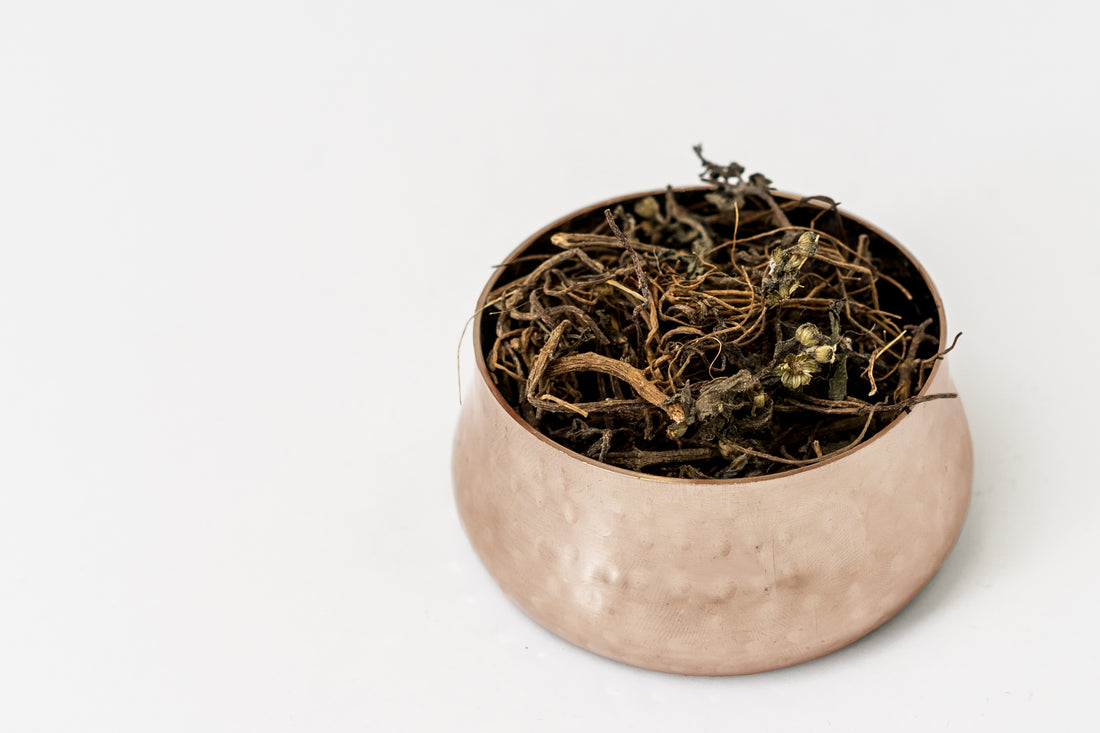Bhringaraj (Eclipta alba) is a traditional Ayurvedic herb that has been used for centuries for its medicinal properties. It is also known as "false daisy" and "yerba de tago" in other parts of the world. The plant belongs to the family Asteraceae and is found across India, China, Thailand, and Brazil.
Bhringaraj is widely known for its hair growth-promoting effects. Studies have shown that the herb can significantly improve hair growth and prevent hair loss (Singh et al., 2009; Kumar et al., 2011). This is due to the presence of active compounds like wedelolactone and demethylwedelolactone, which have been shown to promote hair growth by activating hair follicle stem cells and increasing blood circulation to the scalp (Lee et al., 2010; Roy et al., 2017).
In addition to its hair growth benefits, Bhringaraj has also been found to have hepatoprotective, antioxidant, anti-inflammatory, and anti-cancer properties (Rao et al., 2006; Garg et al., 2012; Chatterjee et al., 2018). These effects are attributed to the presence of flavonoids, alkaloids, and triterpenoids in the herb.
Bhringaraj has also been found to have positive effects on the nervous system. It has been used traditionally to improve memory and cognitive function, and studies have confirmed its neuroprotective effects (Singh et al., 2011; Singh et al., 2014). Bhringaraj has also been found to improve sleep quality and reduce stress and anxiety levels (Sharma et al., 2012; Jaiswal et al., 2016).
Despite its many benefits, Bhringaraj can have side effects if consumed in excessive amounts. It is important to consult with a healthcare professional before using Bhringaraj as a supplement or in any other form.
In conclusion, Bhringaraj is a versatile herb that has been used in Ayurvedic medicine for centuries. Its hair growth-promoting, hepatoprotective, antioxidant, anti-inflammatory, anti-cancer, and neuroprotective effects make it a valuable natural remedy for various ailments.
References:
- Singh, S. K., Taneja, M., Majumdar, D. K. (2009). Biological activities of Eclipta alba (L.) Hassk. (Asteraceae) in human health and disease. Asian Pacific Journal of Tropical Medicine, 2(3), 249-256.
- Kumar, N., Rungseevijitprapa, W., Narkkhong, N. A., Suttajit, M., Chaiyasut, C. (2011). Hair growth promoting activity of Eclipta alba in male albino rats. Archives of Dermatological Research, 303(10), 753-761.
- Lee, D. Y., Choi, H. R., Moon, E., Ahn, Y. J., Chang, I. S., Han, C. K., Kim, H. M. (2010). Hair growth-promoting effects of Eclipta prostrata extract in vitro and in vivo. Journal of Dermatological Science, 57(2), 134-141.
- Roy, R. K., Thakur, M., & Dixit, V. K. (2017). Development and validation of RP-HPLC
- Rao, S. G., Srinivasan, K. K., & Rao, S. S. (2006). Eclipta prostrata (Linn) and its medicinal value. Journal of Herbal Medicine and Toxicology, 1(1), 51-54.
- Garg, S. C., Sharma, S., & Galib. (2012). Pharmacognostical and phytochemical evaluation of Eclipta alba (L.) Hassk. Asian Pacific Journal of Tropical Biomedicine, 2(3), S1398-S1401. doi: 10.1016/S2221-1691(12)60417-5
- Chatterjee, K., Ali, K. M., & De, D. (2018). Antimicrobial potentiality of Bhringaraj (Eclipta alba): A review. Journal of Pharmacognosy and Phytochemistry, 7(2), 3532-3535.
- Singh, D., Singh, B., Goel, R. K. (2011). Traditional uses, phytochemistry and pharmacology of Eclipta alba Hassk. Journal of Pharmacy Research, 4(3), 772-775.
- Singh, D., Singh, B., Goel, R. K. (2014). Eclipta alba (L.) Hassk. (Asteraceae) in food, cosmetics and medicines: Ethnopharmacology, phytochemistry and pharmacology review. Food and Chemical Toxicology, 68, 24-29.
- Sharma, V., Pandey, D. (2012). Protective role of Tecomella undulata and Eclipta alba against CCl4-induced hepatic damage in rats. International Journal of Pharmaceutical Sciences and Research, 3(11), 4223-4229.
- Jaiswal, Y. S., Williams, L. L., Aneja, R., & Nigam, M. (2016). Investigation of antioxidant and anti-inflammatory potential of methanolic extract of Eclipta alba in rats. Journal of Ayurveda and Integrative Medicine, 7(1), 20-26. doi: 10.1016/j.jaim.2015.08.003

